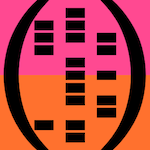This repository contains a number of schematics for synthesizer circuits that only use a single sided power supply.
- Low Pass Gate / Voltage Controlled Amplifier
- Low Pass Gate / Voltage Controlled Amplifier with Decay Envelope
- 4069 CMOS State Variable Filter / Wasp Filter
- Simple Sh'mance for Fourses Tarp
- Dust and Noise
Let's define what those terms actually mean:
-
Synthesizer : the circuits all have something to do with producing sound, or modifying sound or modifying the circuit that is producing the sound.
There are two different and distinct signal types produced and consumed by the circuits. The first is audio signals, which are in the range of human hearing and the realm of human auditory perception. These signals range in frequency between 20Hz and 20,000Hz. Anything below 20Hz is perceived as rhythm, or clicking, and anything above 20,000Hz is ultrasonic. Children, teenagers and people who haven't wrecked their hearing in loud music venues and constant headphone wearing (like me!) might be able to perceive frequencies above 20,000Hz
The second signal type is control voltage. These are signals that are not directly listened to but control (modulate) other circuits in some way. One example is a low-frequency oscillator (LFO) that modulates a voltage controlled amplifier (VCA) which has an audio signal passing through it. At low frequencies of the LFO, the raising and lowering of the volume of the audio signal will be perceived. At higher frequencies of the LFO, a tremolo effect will be heard.
Although I wrote above that the two types of signal are distinct, this is not entirely true. An audio signal can be used to control another circuit, and a control signal can be listened to. If the control signal approaches 30Hz, it will be perceived by most humans, as long as it is cyclic. At the end of the day, voltages are voltages. To excite a loudspeaker or headphone, the signal has to be cyclic (also known as AC coupled). Many control voltages are not cyclic (also known as DC coupled), such as a pitch control voltage. However, some are, like the aforementioned LFO.
-
Single supply : many synthesizer circuits use a dual power supply which has a positive and a negative power rail, as well as a ground rail. For example, the Eurorack Standard has a ±12V power supply. There is a +12V power rail, a -12V power rail and a 0V power rail.
The circuits in this repository use only a single power supply, with a +12V rail and a 0V rail. This makes it easy and cheap to build power supplies for these circuits, they consist of a 15V AC-DC converter (wall-wart), available commercially for little money, a linear power regulator, like a 7812, a diode (1N4001) and a capacitor.
Many of the circuits create a virtual ground, by dividing the supply voltage in 2, using a resistor voltage divider, and buffering with an op-amp. This creates a reference voltage, at 6V, that the signals generated by the synthesizer circuits can swing around. Other reference voltages are also created, especially for the exponential converters where a voltage of about 1V is created as the reference voltage. This is produced by a resistor divider and op-amp buffer again.
-
Schematics are standardised pictures of electronic circuit layouts, with common symbols for the various components in the circuit, such as resistors, capacitors, transistors, diodes, op-amps, digital logic, etc. Schematics are the lingua franca of electronic circuit design.
Finally, most of these circuits have been adapted from, inspired by, or just plain stolen from circuits freely available on the World Wide Web. For each circuit I have acknowledged the inspiration, adaptation or theft where appropriate and where I have remembered!
A lot of inspiration has come from the Electro-Music forum, specifically the Lunetta sub-forum
Other useful resources I have found on the web when designing single sided synth circuits are:
- Single-Supply Operation of Op-Amps
- Single-Supply Op-Amp Design Techniques
- A Single-Supply Op-Amp Circuit Collection
Each sub-directory contains a schematic, in PDF format, a breadboard layout and an LT-Spice model that I generated when developing the circuits.
